Decorating & Design
January 19, 2017
10 Ways To Embrace The New Scandi Buzzword Lagom At Home
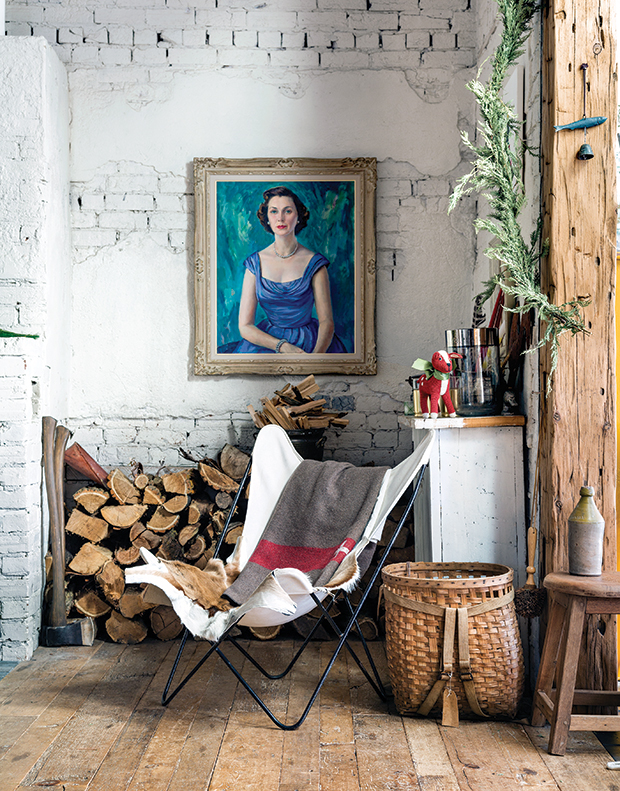
First the Danes introduced us to hygge — their concept of coziness that’s taken off in design — and now it’s time to embrace the new Scandi buzzword that’s all about striking the perfect balance: lagom. Swedish for “not too much, not too little; just the right amount,” it’s centered around the idea of embracing sustainable living in our homes, and it’s here to stay. After all, protecting the environment never goes out of style, and we could all use a reminder that often, less is more. Click through to see 10 inspiring spaces that are pioneering what it means to live with lagom.
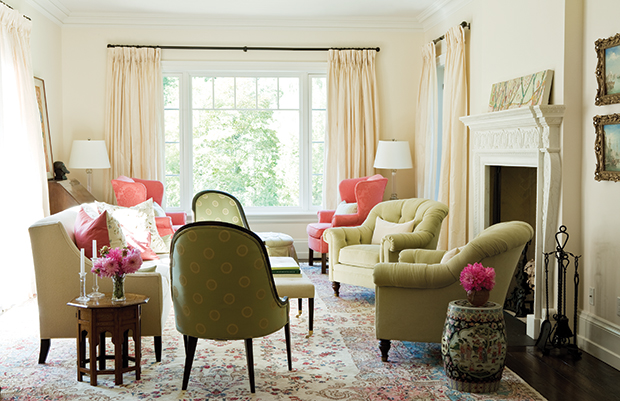
Though this Toronto home is an impressive 6,500-square-feet, the homeowner went to great lengths to ensure that she kept her carbon footprint as small as possible. The exterior walls of the home were constructed with insulating concrete forms (a more efficient choice than wood framing) while all floors have radiant geothermal heating.
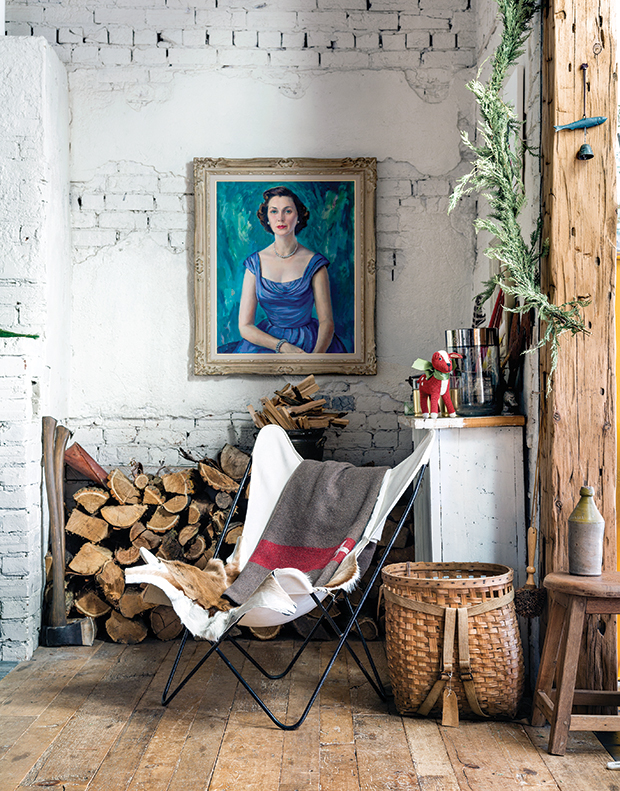
When designer Pheona Wright swapped her mod L.A. pad for a rustic home in rural Ontario, she was sure to transplant her furniture. Warmed with thick blankets and faux fur, a contemporary butterfly chair looks one with its homey surroundings.

In another room of Pheona’s home, the sculptural plywood chair and deep blue ottoman and sectional were flea market finds — though you’d never know it! “I love vintage shopping,” says Pheona. “I think there’s enough new stuff in the world.”
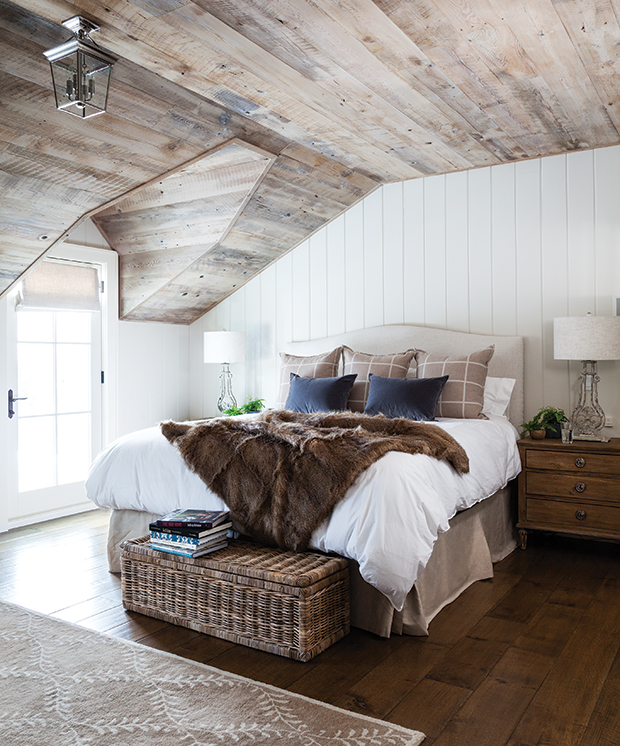
Rather than turning up the heat, invest in high-quality blankets and throws to cut costs and boost hygge factor. Though adornments are minimal, this rustic bedroom feels welcoming thanks to an abundance of throw pillows and a faux fur throw for added warmth.
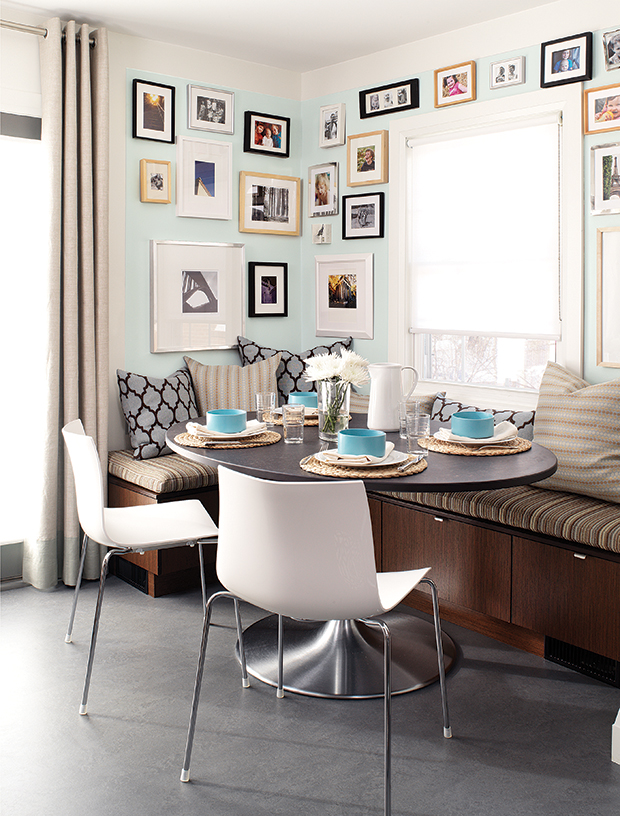
In this homey kitchen banquette, low E-glass helps keep the space warm in cooler months and blocks scorching rays in the summer. The playfully patterned fabrics — including the seat cushion and pillows — were made from waste fibres and recycled water bottles.
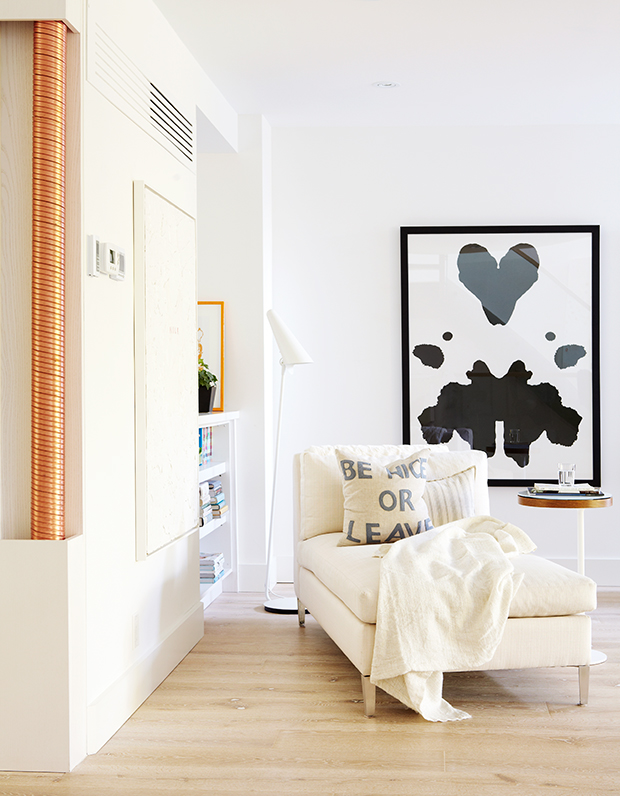
In designer Patsy Bell’s living room, an exposed copper pipe not only adds visual interest, but it’s eco-friendly, too. This “power pipe” captures the heat from water draining down and uses it to preheat incoming water (so that the hot water tank doesn’t have to work as hard). Next to it, a crisp white chaise is a cozy spot for curling up with a good book.
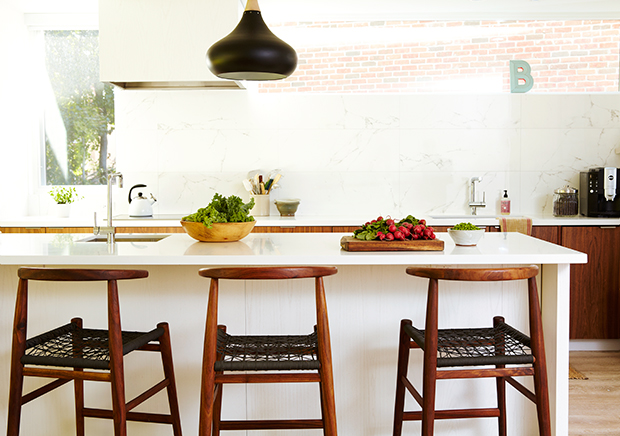
In this same home, porcelain tiles were chosen over marble or granite for the backsplash. Porcelain requires a less energy-intensive extraction process and looks just as fresh when paired with warm walnut cabinetry and a trio of Nguni barstools.

For Gardiner Museum CEO Kelvin Browne, it was important that his 1780s saltbox in Cape Cod “fit into the neighbourhood, which clearly cared about conservation.” To do so, Kelvin left the original hardwood beams exposed in the dining room and opted for contemporary furniture to give it new life. Here, a modern teak table can be expanded to host larger parties.
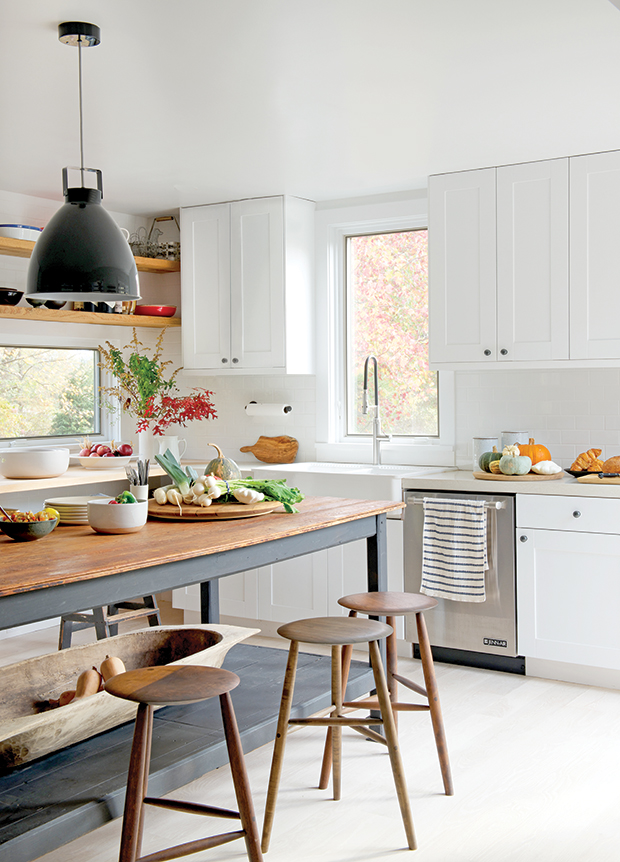
Modern lines and a clean white palette keep this Scandi-inspired farmhouse kitchen from feeling too busy, while worn wooden accents add natural texture.
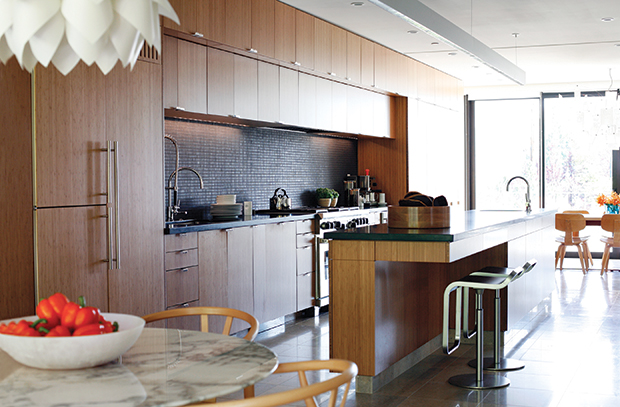
Vancouver architect Clinton Cuddington’s modern kitchen was constructed with an environmental agenda in mind. Cuddington used renewable laminated-bamboo for the cabinetry and opted for programmable LED lights that control the amount of light generated.

